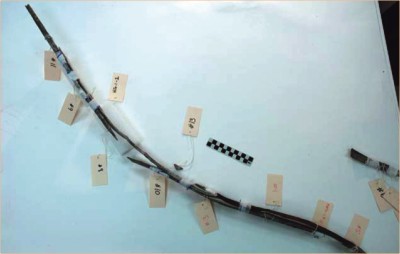
Ice patches result from layers of annual snow that, until recently, remained frozen all year. As Earth's temperature has warmed in recent decades due to the accumulation of heat-trapping greenhouse gases in the atmosphere, some of the ice patches have begun to melt away, sometimes revealing ancient artifacts to the surprise of archaeologists.
"We're just like children opening Christmas presents. I kind of pinch myself," said Tom Andrews, an archaeologist with the Prince of Wales Northern Heritage Centre in Yellowknife, Northern Territories, Canada, and lead researcher on the International Polar Year Ice Patch Study.
Ice patch archeology is a recent phenomenon that began in Yukon. In 1997, sheep hunters discovered a 4,300-year-old dart shaft in caribou dung that had become exposed as the ice receded. Scientists who investigated the site found layers of caribou dung buried between annual deposits of ice. They also discovered a repository of well-preserved artifacts.
Andrews first became aware of the importance of ice patches when word about the Yukon find started leaking out. "We began wondering if we had the same phenomenon here," Andrews said.








